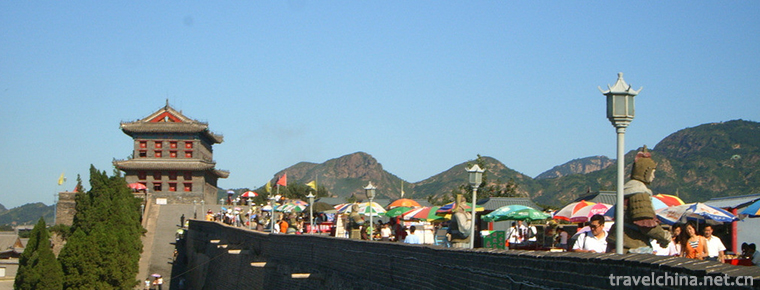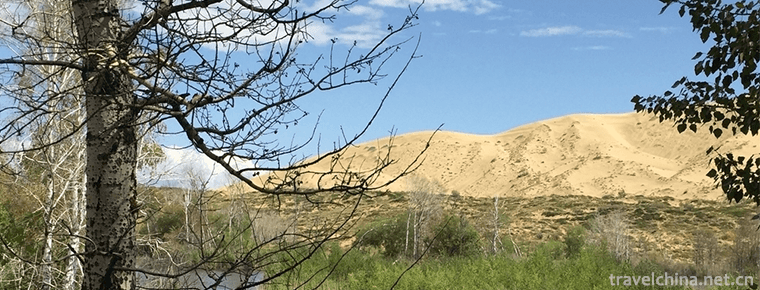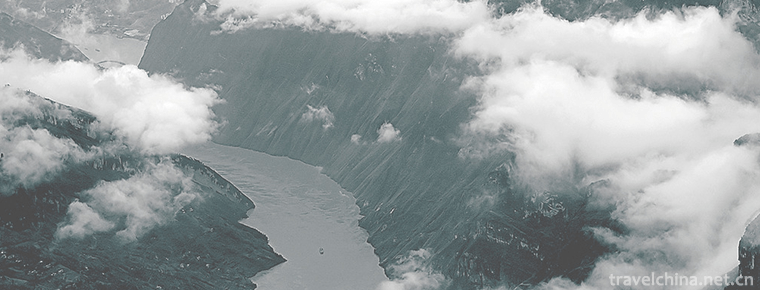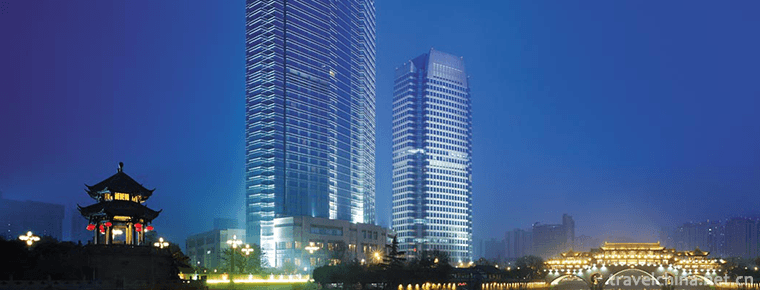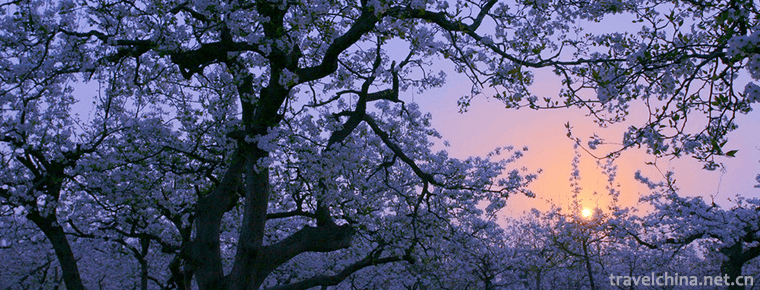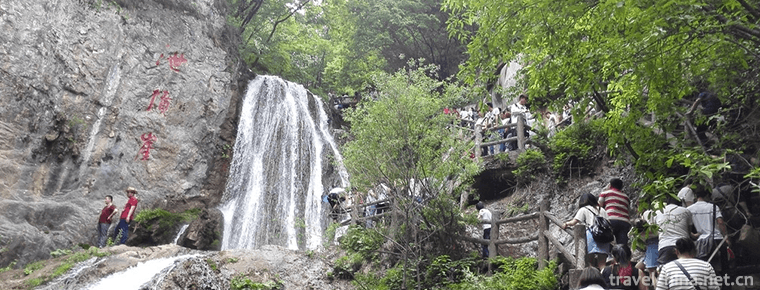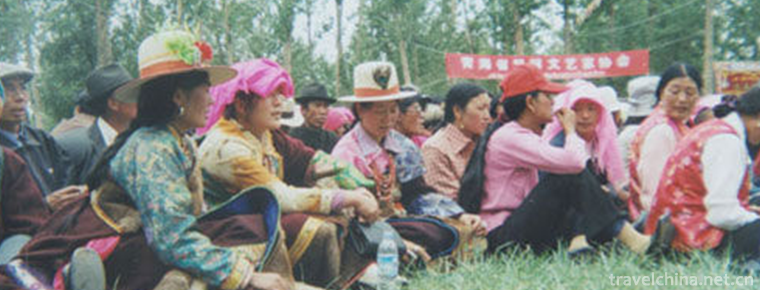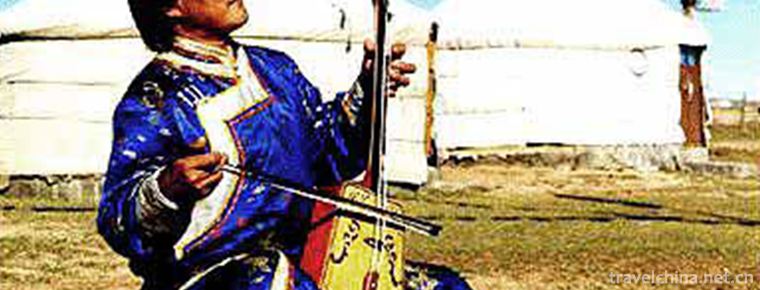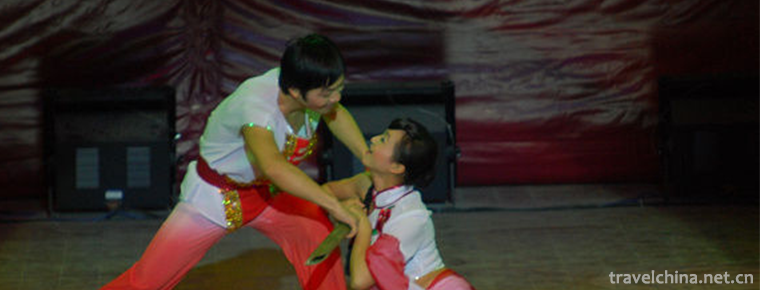Bo dance
Bo dance
Horqinbo dance, a primitive religious dance, is a form of Mongolian Bo (Shaman) "Xingbo" (Dancing God) and sacrifice. It is characterized by the combination of inspiration, singing and dancing, and has the characteristics of self-entertainment, competitiveness and play, which contains teaching in appreciation and entertainment.
origin
"Shaman" originates from the Chinese translation of Tungusian, meaning "a person who dances with excitement". History books generally refer to "Hu Wu", Mongolian people refer to male Shaman as "Bo" and female Shaman as "Odugan". Horqinbo dance is mainly used for offering sacrifices for blessings and exorcising evil spirits and curing diseases. Sacrifices for blessings are usually held in outdoor venues, including sacrifices to heaven and earth, ancestors, fire, thunder, mulberry trees, Aobao and rain, while exorcism and treatment are carried out at night at the home of patients.
details
When Bo dances, his skirt floats like a bird's wings and a horse's feet. In addition, the flickering of bronze mirrors and the sound of loud impact, the sound of drumming and shaking, make people dazzled and feel majestic. Horqin Bo Dance is mainly performed by Bo himself. When "Bang Bo" (two gods) participate in it, there are two-person dance and four-person dance. Their travel process and performance sequence are preparation, altar setting, dressing, table setting, elf box and sword. The first section invites God to worship and dance. The dancer's mood is sacred and pious, mainly singing, accompanied by simple footwork and "eight worship" movements. The second part of Shenlai Dance, the dancer's emotional fanaticism and confusion, with fierce rotation and jumping movements as the main, to dialogue, began to exorcise the evil and cure the disease, divination auspicious. Some Bo also danced Elf Dance according to the gods he came from. "Spirit Dance" is named for its imitation of totem gods, such as "Bird God Dance" and "Tiger God Dance". Most of them are singing and dancing, with rich movements and vivid images. The third part is for the entertainment of God dance, performing "Drum Dance" and "Elf Dance" with drumming skills throughout the dance. "Drum Dancing" moves lightly, skillfully and skillfully, drum point rich and changeable. "Elf Dance" adds gameplay to attract audiences and achieve the purpose of entertaining both people and gods. The fourth dance is basically the same as the first one.
"Laiqing" is a branch of Horqinbo, which is the product of the fierce struggle between Lamaism and Shamanism, so some people call it "Lamaibo". Lai Qing sat on a stool, beating radicals and chanting classics for treatment. Lai Qing's teacher-successor relationship and apprenticeship ceremony are the same as Bo's. But its costumes, instruments, dance movements, performance forms and music accompaniment are different from Bo. Dance is divided into cymbal dance, knife dance and bare-handed dance with different props, without drums or rotations.
Many Bo dances in Horqin are basically the same, but with different styles. Its artistic style of singing and dancing and drumming has been used for reference and developed by the new Mongolian dance art.


Bo dance
-
Lhanagtso Rakshas
Views: 181 Time 2018-10-12 -
Pudacuo National Park
Pudacuo National Park, located in the center of the world natural...
Views: 202 Time 2018-10-18 -
Qinhuangdao Shanhaiguan Scenic Area
Shanhaiguan, also known as Yuguan, Yuguan and Linluguan, is located 15 kilometers northeast of Qinhuangdao City, Hebei Province
Views: 188 Time 2018-11-24 -
Baisha Lake Scenic Area
Baishahu Lake is one of the important scenic spots in Qianli Gallery in Altay, Xinjiang. It is 100 kilometers from Habahe County, 260 kilometers from Altay Airport, 150 kilometers from Kanas Airport
Views: 192 Time 2018-12-12 -
Wushan small Three Gorges
The Little Three Gorges, or the Little Three Gorges Tourist Scenic Spot, was named "Forty Best Tourist Resorts in China" in 1991, "National AAAA Tourist Scenic Spot" in November 20
Views: 171 Time 2018-12-12 -
Chengdu Shangri La Hotel
Chengdu Shangri-La Hotel belongs to Shangri-La Hotel Group. It was officially completed and put into use on May 20, 2007. The hotel is located at No. 9 Binjiang East Road, Chengdu City
Views: 171 Time 2018-12-16 -
Xia Jin Old Yellow River Forest Park
The forest park scenic spot of the old Yellow River in Xiajin is the ruins of the old Yellow River. It is a national AAAA-level scenic spot. It is located in Xiajin County, Shandong Province
Views: 407 Time 2019-02-25 -
Chongdugou Scenic Area
Zhongdugou Scenic Area, located in Luanchuan County, Luoyang City, Henan Province, was given the name of emperor because Liu Xiu, Emperor Guangwu of the Eastern Han Dynasty
Views: 232 Time 2019-03-18 -
Tibetan Layi
Tibetans are divided into three major dialect areas: Weizang, Kangba and Anduo, which form three areas with cultural characteristics combined with topography.
Views: 133 Time 2019-04-10 -
Mongolian Matouqin Music
Horsehead Qin is a typical representative of Mongolian music culture. Whether it is its shape, production material, sound quality, timbre, music expression style and performance method, it embodies th
Views: 152 Time 2019-06-05 -
Yihuanghe Bar Dance
Hebang dance is popular in Hedong area of Yihuang County, Jiangxi Province. It is a kind of traditional folk dance developed by mountain people from generation to generation, chopping branches on the
Views: 280 Time 2019-07-12 -
Deyang scenic spot
There are Sanxingdui ancient Shu civilization sites in Deyang City, where a large number of national treasure level cultural relics such as bronze Dali Man, bronze mask, bronze sacred tree, gold stick and Bian Zhang were unearthed. There are also the pangtong
Views: 327 Time 2020-12-14


